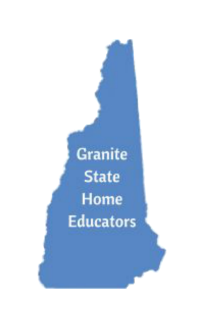New Hampshire district schools receive approximately 59% of their funding from local property taxes and 36% from the state using a per pupil “adequacy” formula and disbursement prescribed in the Claremont I and II decisions. Please attend this workshop to discuss NH’s education funding sources and distribution.
The Newport School Board joins Claremont, Fall Mountain, and Unity to host a discussion on New Hampshire Education Funding on August 14th. Attorneys Andru Volinsky and John Tobin, both on the Claremont cases’ legal team, will provide a public workshop on New Hampshire school funding. It will be held at the Richards Elementary School in Newport NH beginning at 6:00pm.
Community members are invited and encouraged to attend this important conversation.
They will host two additional workshops in the coming weeks; more are in the planning stages.
Monday, August 20th at Gilbert Hood Middle School in Derry starting at 6:30pm
Thursday, September 6th at Hillside Elementary School in Berlin starting at 6:00pm
UPDATE: Additional workshops announced
Sunday, September 9th at Berlin Middle School starting at 6:00pm
Thursday, September 20th at Keene Middle School starting at 6:00pm
Tuesday, September 25th at Haverhill Cooperative Middle School starting at 6:00pm
Tuesday, October 2nd at Concord High School starting at 6:00pm
Wednesday, October 10th at Spaulding High School in Rochester starting at 6:00pm
Thursday, October 18th at Nashua North High School starting at 6:00pm
If we focus on education, instead of the bricks and mortar buildings where classes are held, NH does not have an education funding problem. As a state, we have an obligation to fund each child’s education, not necessarily a particular building. Many children, particularly those in low-income households, are trapped in their zip-code assigned schools. If we remove that restriction, families are empowered to select the best educational opportunity that fits their children’s needs and are incentivized to do so efficiently and with maximum benefit to the child’s needs. If New Hampshire is truly committed to supporting education, then we have an obligation to provide more opportunities to children beyond their designated district bricks and mortar schools.
While considering the proposals by Mr. Volinsky and Mr. Tobin, keep the following facts in mind:
- New Hampshire has declining enrollment in public schools. In 2008-2009, there were 197,956 students in all grades. As of the 2017-2018 school year, there were nearly 20,000 fewer students or 178,328 enrolled statewide. For the years 2012 to 2017, enrollment was down 10.3% across the state.
-
-
- The cost of an “adequate” education is over $15.3K per pupil. Per the NH DOE, “the cost per pupil is calculated by subtracting tuition and transportation from K-12 current operating expenditures, and then dividing by the average daily membership in attendance (ADM-A). The report “State Average Cost Per Pupil and Total Expenditures” identifies which expenditures have been included or excluded. The per pupil amount of all expenditures – operating, tuition, transportation, equipment, construction, interest and non-K-12 expenditures is $18,216.28.”
-
-
- By comparison, NH’s 24 chartered public schools receive the state “adequacy” funding, $3636 per pupil, like their local district counter-parts. They also receive an additional $3036 per pupil of state monies (FY 2017) for a grand total of $6671 per student, a little more than 1/3 that given to public schools. Chartered public schools receive no additional funds from local tax dollars and operate tuition-free.
-
-
-
- For the coming 2019 fiscal year, the state funds will comprise 35.5% of local district’s budgets at $3636.06 per pupil based on their average daily membership (ADM) plus any differentiated aid ($1818 for low-income students, $1956 for children with special needs, $711 for English language learners, and others). This is the state adequacy fund. The revenue sources are business taxes, rooms and meals taxes, lottery revenue, and approximately 40% comes from statewide property taxes.
-
-
-
- A report prepared in March 2018 by the Josiah Bartlett Center for Public Policyand EdChoice shows “that public schools in New Hampshire have received large increases in taxpayer funds since 1992, and that these funds have largely been spent to increase staffing—well over and beyond what was necessary to accommodate student enrollment growth. These increased resources for public schools did not translate into meaningful increases in salaries for teachers. As shown an earlier report, Back to the Staffing Surge, this is a national pattern and these large increases in staffing have not resulted in improved outcomes for students.”
-
-
-
- Much of public schools’ costs are variable costs in the short run, but all of their costs are variable in the long run. In a report by Dr. Benjamin Scafidi, “The Fiscal Effects of School Choice Programs on Public School Districts.” Table 6, Short-Run Fixed and Variable Costs by State, shows that in New Hampshire, 72.3% percent of total costs are short-run variable costs. That increases with a longer time horizon because all costs are variable in the long run.
-
-
-
- A 2012 study by the Josiah Bartlett Center for Public Policy shows that the effective rate for private school tuition is $6328 for elementary schools and $9302 for high schools. This is far less than the state average of public education.
-
Given the state’s declining student enrollment and higher costs of public education, it is efficient and logical to offer expanded educational opportunities to families instead of restricting students to their locally assigned schools. Children have one chance at an education that fits their needs; it is our obligation to give them every best opportunity to succeed.
-




